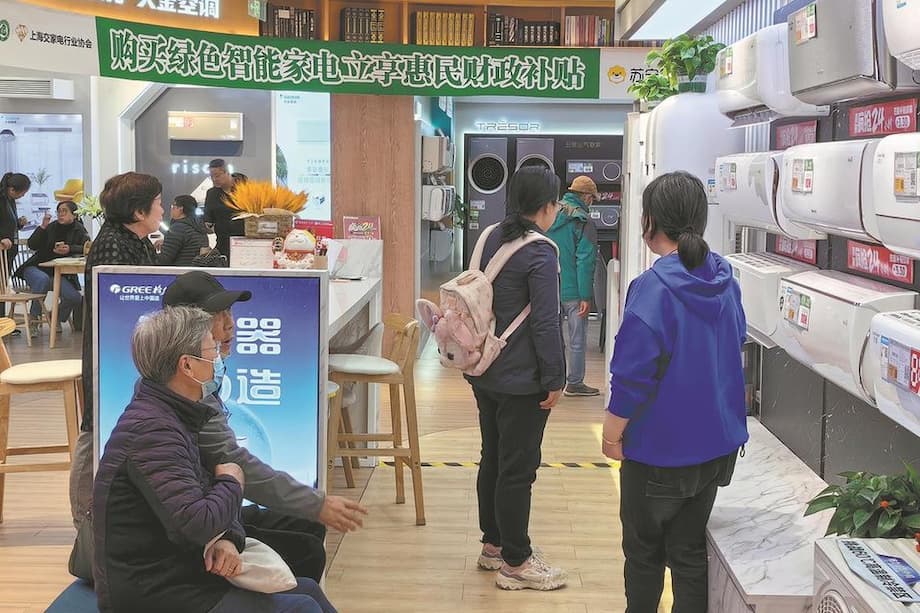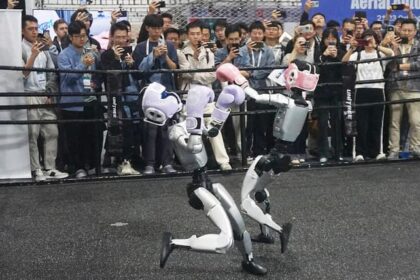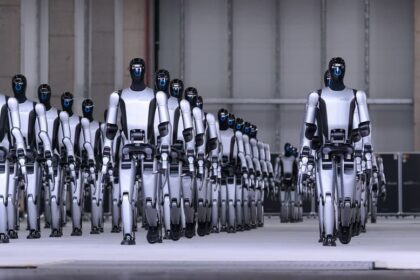China’s Aging Population and the Rise of the Silver Economy
China is experiencing a profound demographic shift. With nearly 300 million people aged 60 and above—over 21% of the population—the country is rapidly becoming one of the world’s oldest societies. This transformation is driven by longer life expectancy and declining birth rates, and it is reshaping every aspect of Chinese society, from healthcare to consumer markets. The economic opportunities arising from this shift are often referred to as the “silver economy,” a term that encompasses all products and services designed for seniors.
As the silver economy gains momentum, Chinese policymakers and businesses are racing to meet the evolving needs of their aging citizens. The government has introduced national policies to stimulate consumption and improve services for the elderly, aiming to build a robust support system by 2029. At the same time, leading home appliance makers are leveraging artificial intelligence (AI) to create innovative products that promise to make life safer, healthier, and more comfortable for seniors.
Why Home Appliances Matter in the Silver Economy
For many seniors, especially those living alone or with limited mobility, home appliances are not just conveniences—they are essential tools for daily living and independence. As the elderly population grows, so does demand for appliances that are easy to use, health-oriented, and tailored to the unique needs of older adults. This demand is particularly strong in urban areas, where many seniors have higher disposable incomes and are more open to adopting new technologies.
According to market consultancy All View Cloud, the market for senior-friendly home appliances in China is expected to exceed 100 billion yuan (about US$14 billion) in 2025 and reach 1 trillion yuan by 2030. By 2035, the silver economy could account for 9 percent of China’s GDP, with the overall sector projected to grow from 7 trillion yuan in 2024 to 30 trillion yuan by 2035. These figures highlight the immense business potential for companies that can successfully cater to this demographic.
Changing Consumption Patterns Among Seniors
Chinese seniors are increasingly willing to spend more on themselves, especially on health, wellness, and lifestyle products. While older generations were once known for their frugality, rising incomes and improved pension systems have enabled many to pursue higher-quality goods and services. E-commerce adoption is also on the rise, with millions of seniors using digital platforms for shopping and payments. Family influence remains strong, but seniors are becoming more independent in their purchasing decisions, seeking products that enhance their quality of life and support active aging.
AI-Powered Innovations: How Home Appliance Makers Are Responding
Leading Chinese home appliance companies are at the forefront of this transformation, integrating AI and smart technologies into their products to better serve the elderly. These innovations are not just about convenience—they are about empowering seniors to live independently, stay connected, and maintain their health.
Haier Group: Personalized Rehabilitation and Smart Bathrooms
Haier Group, one of China’s largest appliance manufacturers, has developed AI-driven rehabilitation robots that offer personalized rehab plans based on the physical conditions of elderly users. These robots can monitor progress, adjust exercises, and provide real-time feedback, making rehabilitation more accessible and effective for seniors who may have difficulty visiting clinics regularly.
Haier has also introduced a range of bathroom products designed for seniors with mobility challenges. These include toilets, showers, and entire bathrooms equipped with constant temperature control and voice recognition features, allowing users to adjust settings without physical effort. Such innovations address both safety and comfort, reducing the risk of accidents and making daily routines easier for those with limited mobility.
Hisense Group: Smart TVs as Health and Social Hubs
Hisense Group has launched televisions equipped with medical-grade vision protection, tailored to the viewing habits of older adults. But these TVs go far beyond entertainment—they serve as interactive platforms where seniors can play games, exercise, shop online, and video chat with family and friends. Hisense is also collaborating with hospitals to develop healthcare management platforms, integrating health monitoring and telemedicine services directly into the TV interface.
This approach transforms the television from a passive device into a central hub for health, social interaction, and daily living, helping to combat loneliness and support mental well-being among seniors.
Sichuan Changhong: Integrated Eldercare Systems
Sichuan Changhong Electronic Holding Group has developed a smart eldercare system that connects home appliances, medical devices, and security systems. Their AI-powered TVs can remind seniors to take medication, monitor vital signs, and even alert caregivers in case of emergencies. By creating an interconnected ecosystem, Changhong is helping seniors live independently while providing peace of mind to their families.
These examples illustrate a broader trend: home appliances are evolving from standalone devices into intelligent, interconnected systems that support every aspect of senior living.
The Role of AI: From Convenience to Companionship
Artificial intelligence is the driving force behind many of these innovations. By enabling voice interaction, health monitoring, and personalized assistance, AI makes appliances more accessible and responsive to the needs of seniors. But the impact of AI goes beyond functionality—it is also transforming the emotional experience of aging.
AI as an Emotional Companion
With many seniors living alone, loneliness and social isolation are growing concerns. AI-powered devices, such as smart speakers, TVs, and even robotic pets, are increasingly serving as emotional companions. These devices can engage in conversation, provide reminders, and offer entertainment, helping to fill the social gap for those who may have limited contact with family or friends.
According to Liang Zhenpeng, an independent consumer electronics analyst, “household appliances are becoming emotional companions for the elderly, creating a safer, more comfortable, and smarter home environment.”
“With the help of AI, senior-friendly home appliances are creating a safer, more comfortable and smarter home environment for silver-haired residents,” said Liang Zhenpeng. “These products should cater to the fundamental needs of the elderly, while home appliance makers need to further expand application scenarios, striking a balance between technological iteration and user education.”
Robotic Pets and Care Robots
AI pets, such as robotic dogs and cats, have become popular among Chinese seniors. These robots can interact physically, develop personalities based on their owners, and provide companionship without the challenges of caring for a live animal. For many, these AI pets offer comfort and emotional support, especially for those who have lost spouses or whose children live far away.
More advanced care robots are also entering nursing homes and private residences. These robots can remind seniors to take medication, assist with daily tasks, and even call for help in emergencies. As technology advances, experts predict that companion robots could become common in Chinese households within a few years, potentially creating a trillion-yuan industry.
Government Policy and Market Drivers
The Chinese government has played a crucial role in fostering the growth of the silver economy and the adoption of AI-powered home appliances. Policymakers have made boosting domestic demand a central pillar of economic strategy, with a particular focus on improving living standards for seniors. Measures include issuing special treasury bonds to support consumer goods trade-in programs, raising pension benefits, and increasing spending on healthcare and social security.
Subsidies and incentives have been introduced to encourage the purchase of new, smart home appliances, making these products more affordable for seniors. The government has also issued guidelines to build a comprehensive services system for the elderly by 2029, encouraging companies to develop and promote high-tech products and services tailored to seniors’ needs.
Technological Innovation and Industry Collaboration
China’s rapid advancements in AI, 5G, Internet of Things (IoT), and cloud computing have created a fertile environment for innovation in eldercare. Companies are not only competing domestically but also collaborating with international partners to bring the latest technologies to market. The adoption of homegrown AI models, such as DeepSeek, across industries—including home appliances—demonstrates China’s commitment to leading in practical AI applications.
For example, Midea has launched DeepSeek-enhanced air conditioners that can respond to verbal expressions and adjust settings automatically, while other brands are integrating AI into vacuum cleaners, refrigerators, and security systems. These developments are part of a broader shift from single-device intelligence to whole-house smart ecosystems.
Challenges and the Path Forward
Despite significant progress, challenges remain. Many seniors still face a digital divide, with limited experience using smart devices or navigating complex interfaces. There is also a need for standardized design and safety features to ensure that products are truly accessible and reliable for older users. Experts stress the importance of user education, after-sales support, and ongoing technological innovation to meet the diverse and evolving needs of the elderly.
Zhang Subing, chief expert at the China Electronics Standardization Institute, emphasized:
“More efforts should be made to strengthen technological innovation, improve product design and enhance after-sales support for the elderly, with a key focus on embedding AI and health-oriented functions into intelligent terminal devices.”
Another challenge is the regional disparity in aging and income levels. Seniors in urban and eastern provinces tend to have higher disposable incomes and greater access to advanced products, while those in rural or less developed areas may face barriers to adoption. Bridging this gap will require targeted policies and inclusive design strategies.
Looking Ahead: The Future of Aging in China
The silver economy is expected to continue its rapid expansion, with the elderly population projected to grow by over 10 million annually for the next decade. As seniors become more tech-savvy and financially secure, their expectations for quality, convenience, and personalization will only increase. The integration of AI into home appliances is just the beginning—future innovations may include more advanced nursing and housekeeping robots, smart home modifications, and seamless integration with healthcare services.
In Summary
- China’s aging population is driving the rapid growth of the silver economy, with seniors making up over 21% of the population and rising.
- Home appliance makers are leveraging AI to create products tailored to seniors, including smart TVs, rehabilitation robots, and integrated eldercare systems.
- AI-powered appliances are not only improving convenience and safety but also providing emotional companionship and supporting independent living.
- The Chinese government is actively supporting the silver economy through subsidies, policy incentives, and guidelines for eldercare innovation.
- Challenges remain, including the digital divide, regional disparities, and the need for standardized, user-friendly designs.
- The market for senior-friendly home appliances is expected to reach 1 trillion yuan by 2030, with the silver economy accounting for 9% of GDP by 2035.
- Ongoing technological innovation and inclusive policies will be key to ensuring that all Chinese seniors can benefit from these advancements.












